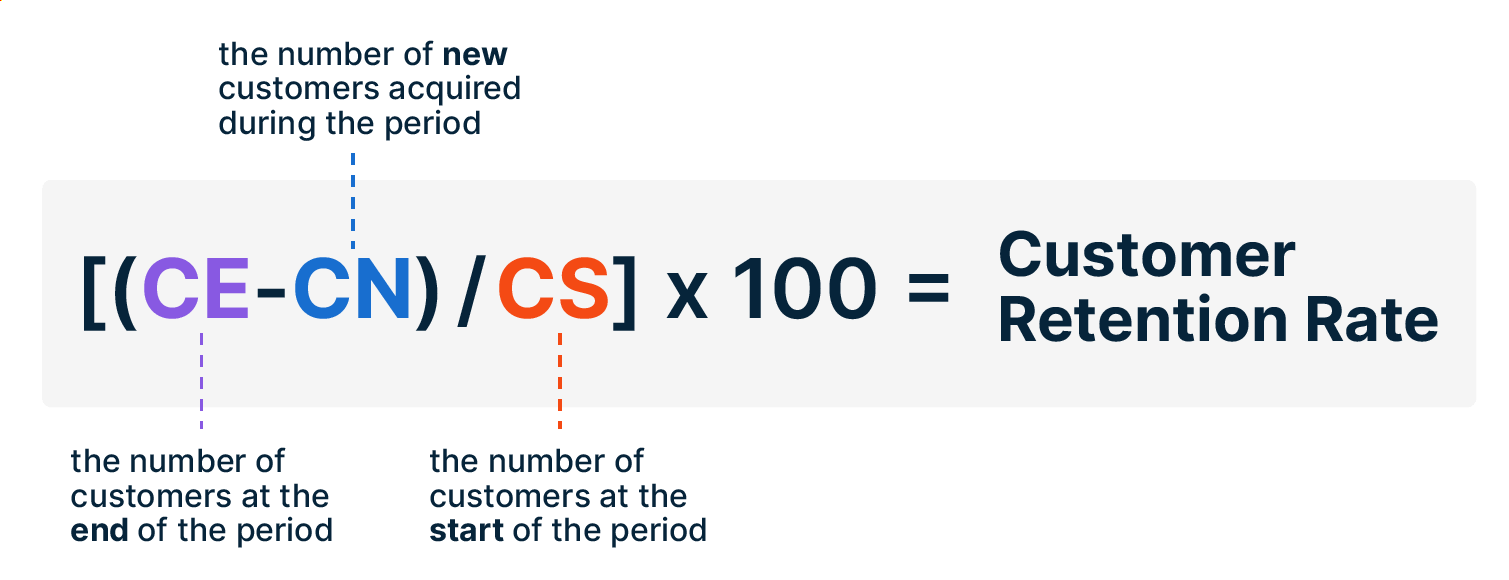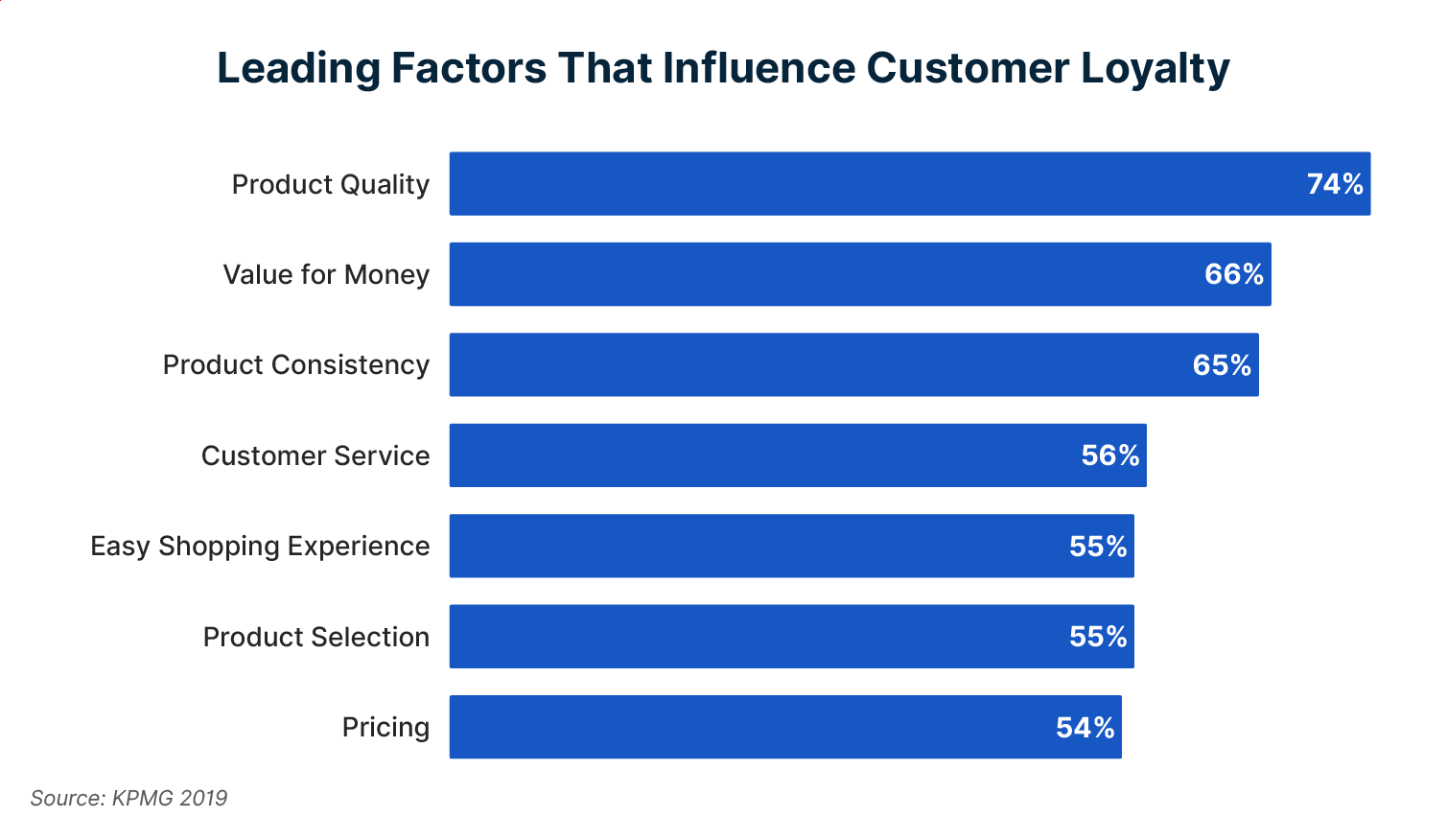Customer retention is so much more than clients who make repeat purchases. In Software-as-a-Service (SaaS) companies, customer retention means customers continually renew software subscriptions, purchase add-ons, upgrade systems, and remain loyal to the business because the customer is satisfied with their experience.
Businesses use B2B SaaS customer retention strategies that equip and reward current customers, so the customers continue receiving the full benefits of B2B SaaS.
Explore eight B2B customer retention strategies to encourage customer loyalty for your B2B SaaS company.
Key Takeaways:
- Customer retention shows that a company is financially stable and customers are satisfied
- Consistent customer communication helps businesses resolve issues quickly, understand customer expectations, and provide exceptional service
- Continually provide customers with resources, training, and upgrades to boost customer loyalty
What Customer Retention Says About Your B2B SaaS Business
Customer retention is a key metric for measuring the health of a B2B SaaS business. However, only 18% of companies focus on customer retention compared to 44%, which focus on customer acquisition. Despite the emphasis on finding new customers, the probability of selling to new customers is just 5% to 20% compared to a 60% to 70% probability of selling to existing customers.
How can B2B SaaS businesses accurately measure customer retention?
The customer retention rate formula compares the number of new customers to the number of loyal customers in a set period. A retention rate of 35% or higher is above average for SaaS businesses.
Investing in a positive customer relationship pays off, as just a 5% increase in customer retention can boost business profits by 25%.

8 Strategies for Maximum B2B SaaS Customer Retention
SaaS companies should use these eight B2B retention tactics to improve customer retention rates.
1. Meet Customer's Expectations
Customers enter into a business relationship with certain expectations. Some examples of customer expectations include:
- Timely delivery of services
- Quality customer support
- Consistent products and services
- Solved challenges
Companies that don't meet these expectations after a purchase can cause customers not to renew that subscription. For instance, if a business claims the software speeds up a business process, but the customer still takes the same time to complete that task, the customer won't be willing to continue paying for the service.
Businesses can retain SaaS customers by ensuring the business' products meet and surpass customer expectations through exemplary customer support, regular upgrades, and open communication channels.

2. Monitor Customer Feedback
While mindreading would help determine when customers are growing frustrated, unfortunately that's not an option. However, businesses do have another way to see inside customers' heads.
Social listening is monitoring comments, mentions, and reviews to hear what customers say about the business. These sources offer insights into what a company does well and to what its weaknesses are. Addressing those shortcomings and marketing the benefits of your B2B SaaS business improves customer loyalty.
If a business is losing customers but doesn't see any online reviews specifying why, surveys and exit interviews could provide the insights the company needs to discover how satisfied customers are.
3. Address Issues Quickly
Surprisingly, 20% of B2B buyers have had issues with services, yet only 40% of that group say that the B2B business ever resolved their problems. Furthermore, only 5% of B2B customers reported being highly satisfied with their experience with a brand.
Dissatisfied B2B buyers won't stick around long if there's a continued issue. 71% of B2B customers aren't emotionally attached to vendors, which makes switching easy if problems exist.
B2B SaaS brands can improve customer loyalty by quickly addressing problems and offering solutions. In addition, open communication and support channels provide the intercourse the client requires to voice concerns and find help.
4. Use Data to Boost the Customer Experience
A data-backed approach to the customer experience allows businesses to personalize customer service based on customer behaviors and past engagement. Personalized content positively impacts customer loyalty for 82% of customers.
While 73% of customers say a positive experience influences their purchasing behavior, 71% of customers will end a relationship with a business if the customer has a poor experience.
Data helps businesses boost the customer experience by using customer behaviors to guide the experience to ensure each interaction, recommendation, and update focuses on the customer needs. One way to collect data is through webinar lead generation. These webinars monitor attendees' behavior throughout the presentation, such as questions asked and resources downloaded. That data helps webinar presenters understand those potential customers and create better experiences.
5. Monitor a Lack of Data
While data gives essential insights into customers, a lack of data also speaks volumes about a customer's satisfaction level. For example, if a B2B buyer hasn't logged into a business software account in over a month, hasn't used any upgrades, and hasn't made any additional purchases in several months, those aren't good signs.
That lack of data and activity often reflects growing dissatisfaction with a product. Unfortunately, not all customers will tell businesses when the customer grows dissatisfied. Instead, the customer will silently leave without notice.
Over half of customers will leave a business if the business doesn't actively engage the customer. Measuring customer engagement and re-engaging customers with low engagement catches customers who might be growing dissatisfied before that customer leaves.
6. Build a Customer Journey Map
A customer journey map doesn't have to end when a customer makes the first purchase. Instead, a customer journey map showing a loyal customer's journey can show the ups and downs of the customer relationship.
For example, if a business struggles to hold onto customers past one year, the company can map that one-year journey to find indicators of waning interest or influencing factors. That map includes customer communications, comments, and behaviors that might point to the underlying cause of growing dissatisfaction.
An exit interview will also provide insights into what caused the customer to lose interest so the business can address those issues and extend the average customer lifecycle.
7. Reward Loyalty
According to 75% of consumers, loyalty programs and rewards are essential for retaining customers. A loyalty program can include a points system, surprise gifts, and exclusive discounts.
In addition to gifts, businesses can recognize loyal customers through regular emails acknowledging customer milestones.
8. Provide Resources for Continued Product Use
Creating demand for SaaS products is a lifelong mission for marketers. If a customer loses interest in the software or doesn't feel like the software is worth the cost, the customer will stop renewing the software subscription.
Marketers can address this issue by creating customer loyalty content. For example, regularly posting blog posts, creating resource materials, and hosting webinars that train customers on current products help customers to maximize the software's benefits.
Get More B2B SaaS Customer Retention Strategies
Improve customer retention rates by providing valuable resources and training to keep customers informed on the best ways to use SaaS products. ActualTech Media can help your B2B SaaS company create content—from e-books and whitepapers to comic books and infographics—to educate and engage with your customers.
Contact us to learn more about our content creation services.